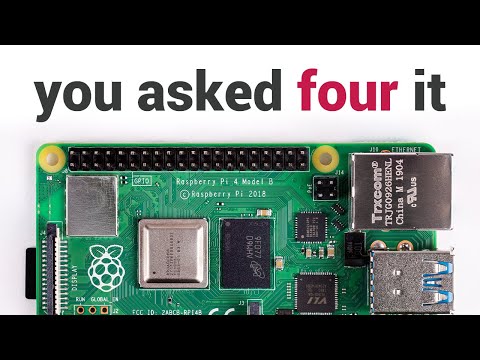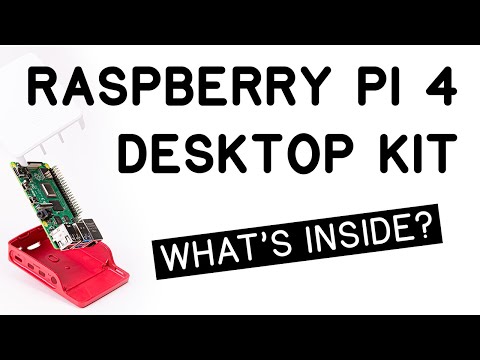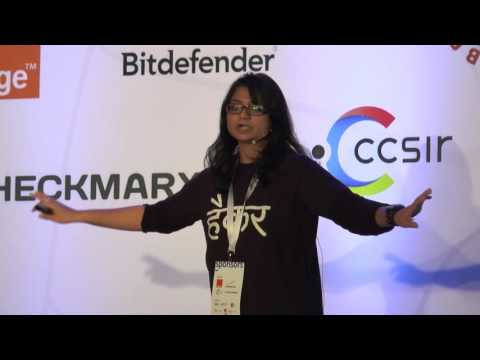#150
The Hacker
Tuesday, January 21st 2020, 9:54:23 pm
Raspberry Pi
The $35 Raspberry Pi is the most handsome in a class of computers
called Single-board computers. They just released version 4, so make
sure you get that one; and don’t forget a monitor. BestBuy does sell the
PI, packaged in the Raspberry Pi 4 Cana Kit. Personally, I think
getting the original keyboard and mouse is really cool, I am not a fan of
the plastic case and would go for a cool looking Heat Sink “Case” -
and then probably short something out. Good news is that ashens has a two
part review of all the popular cases here you go: Part 1 and Part
2. Heads up, ashens is an odd British man that utters odd British
phrases.

Portable Monitor
Monitors
There is a class of monitors called Portable Monitors it is still nice
to have a desk one, but if you are wondering which one to get; get a
portable first (the cheapest one is $99), then you can take it to
Starbucks, plug in your PI, keyboard and mouse, and headphones; and
compose some music with LMMS whilst pondering album art with
GIMP.

Screen Projector
Don't forget about Projectors as those too are a kind of monitor (the
cheap ones are $50 - $75). A projector turns any wall into a monitor.
Heist
She likley stole her daddy’s dad’s password by using her older brother’s
key logger. To log into her dad’s computer she uses the ssh command.
ssh is just a program that establishes a secure (encrypted) connection
between two computers. She executes ssh alex@192.168.1.27 at 1:27. And
begins using the ssh program.
The remote shell, for convenience sake, looks almost the same as her own
local shell. Even though very little changes on her screen she is in a
full-screen program now, and once she is authenticated her shell prompt
changes to that of the remote system. It goes from pi@calebpi ~ $ to
[]~$[].
A shell prompt is the thing that indicates that you are free to type
commands. Her dad’s shell prompt is broken, he messed up with whatever was
supposed to go in between those square brackets, it maybe that he is using
fonts that the Raspberry PI does not have, or some mess like that. My
prompt as I write this is [user@computer warrior]$ that means username is
user, my computer’s network name is computer, and the directory I am in is
warrior.
The dollar sign $ indicates that I, alex, and pi are normal users. You can
escalate your system privileges to become a system administrator where you
can read or delete other user’s files. On most systems the dollar sign
would then change to the pound sign # to indicate that care must be taken
as you are in special privileges mode, often called root.
Warning
Now, when the Little Hacker Lady, logs into her dad’s computer she makes it
talk using the say command.
A command is a feature of the Operating System, using commands is a
management or administrative task, it is not really true programming, but
it is OK to call it that.
The say command uses speech synthesis to convert text to speech. The
say command resides on her dad’s computer, and thus uses her dad’s speaker.
She executes the command at 5:10
The command she executes is wonderfully illustrative:
say -v serena dad watch out
You see that -v that’s a special directive that states when executing the
say command use the voice of serena, serena is a cute name for a library of
sounds, the say command supports multiple voices, serena is one of them.
How do people know that -v means voice, and how do they know that serena
is one of the voices? Nobody knows this at first, before a person
executes a command they read about it in a manual. The manual command is
called man and people usually type man followed by the command-name that
they want to learn about. In this case: man say (meaning bring up the
manual page for the say command). The man page will tell you how you can
list all the available voices too (say -v=?), a command like say can do
multiple things based on what you are trying to do. Here is the internet
version of a man page for say: https://ss64.com/osx/say.html
People are not happy with this. Many try to create simplified man pages,
here is one example https://tldr.sh/ but it is always best to go to
the source, and just get used to the man command.
She didn’t need to use the serena voice library, she could have just
executed:
say dad watch out
And the say command would use the default voice. The say command is mostly
available on Macs, Raspberry Pi will likely use the espeak command.
espeak "dad watch out"
Espeak command is slightly different, for it gets confused by multiple
words, you have to join them together by wrapping them in quotes. A
programmer should demand that his program code has good hygiene. eSpeak
simply said “I am not just going to read everything that you type at me”
whereas the programmer that made the say command said “Let’s just assume
that whatever they throw at us needs to be converted to speech unless
something starts with a hyphen”. The say command makes assumptions, whereas
espeak is very strict about input.
The Kill -9
At 3:49 the Little Lady Hacker explains that she will be shutting down
her dad’s code editor, and writes down the Process ID number 95251. Mac
users frequently use Sublime Text code editor. She issues the kill
command with the -9 switch, this is a terrible idea, as it basically
crashes her dad’s code editor and the -9 ensures there is no way to save
data. Here is the man page for the kill command
https://linux.die.net/man/1/kill. Unix programs that are actively
running are called processes (as in a program that is processing something)
and each process has a number. The kill command can be used during
development and debugging, in a reboot scenario, or when battery is about
to die on a laptop, it has its proper uses. As a joke, it is already bad
enough to use the kill command on a process as it sends a TERM[inate]
signal. As a programmer you can add a signal handler in your program, and
then in case of TERM signal you can for example ask the user to save his
data, the TERM signal is an advisory. The -9 sends a KILL signal. There is
no handler for the KILL signal, there is no saving work, the process is
destroyed by the Operating System, whatever he was working on is lost. She
executes kill -9 95251 at 5:26 his code editor disappears instantly.
Yikes!

All Your Base Are Belong To Us
Lookup All Your Base Are Belong To Us over at the Jargon File
Jargon File
There is a wee bit of jargon here, but don’t worry. ESR is managing a
jargon file you can read at
http://www.catb.org/~esr/jargon/html/go01.html and he has a cool
HOWTO on hackers from which I quote below:
What Is a Hacker?
There is a community, a shared culture, of expert programmers and
networking wizards that traces its history back through decades to the
first time-sharing minicomputers and the earliest ARPAnet experiments. The
members of this culture originated the term ‘hacker’. Hackers built the
Internet. Hackers made the Unix operating system what it is today. Hackers
make the World Wide Web work. If you are part of this culture, if you have
contributed to it and other people in it know who you are and call you a
hacker, you’re a hacker.
The hacker mind-set is not confined to this software-hacker culture. There
are people who apply the hacker attitude to other things, like electronics
or music — actually, you can find it at the highest levels of any science
or art. Software hackers recognize these kindred spirits elsewhere and may
call them ‘hackers’ too — and some claim that the hacker nature is really
independent of the particular medium the hacker works in.
There is another group of people who loudly call themselves hackers, but
aren't. These are people (mainly adolescent males, and little girls) who
get a kick out of breaking into computers and phreaking the phone system.
Real hackers call these people ‘crackers’ and want nothing to do with them.
Real hackers mostly think crackers are lazy, irresponsible, and not very
bright, and object that being able to break security doesn't make you a
hacker any more than being able to hot-wire cars makes you an automotive
engineer. Unfortunately, many journalists and writers have been fooled into
using the word ‘hacker’ to describe crackers; this irritates real hackers
no end.
The basic difference is this: hackers build things, crackers break them.”

The Glider
Hacker Logo
This is a glider, a bit of a symbol for hackers, who are like cats, and do
not like each other, herds, or stupid little symbols.

A look at a glider
Gliders
The glider comes from Conway’s Game of Life the little things
manufactured by Gospers glider gun and walking off towards lower right
are gliders in action.)

Game of Life and the Gliders
Cellular Automaton
Gliders, are of the world of Cellular Automaton, you have heard Murray
Gell-Mann talk about it in context of Emergence the Game of Life is a
little simulation of playing with Fundamental Principles, and Accidents.
Life emerged the same way the gliders do, out of Complexity, Infinity of
Time, Fundamental Principles, and Accidents (remember nobody counted the
failed attempts).
Stephen Wolfram
Here is Stephen Wolfram in his “Computing a theory of everything” TED talk,
reminding us to never pause after uttering the words “I invented a new
kind of science” - Oof!.
White Hat Hackers
Without Pentesters, Ethical Hacking, or White Hat Hackers we would never
become aware of vulnerabilities in our phones, smart homes, refrigerators,
lockers - day to day lives. They do not keep information secret, and help
us keep our family, homes, and possessions safer and more secure.
Lock Picking Lawyer
Lock Picking Lawyer has 1.14M subscribers (Dec, 2019).

#150: The Hacker
Tuesday, January 21st 2020, 9:54:23 pm
Links
- 1. What is a Hacker? with Emmanuel Goldstein. (www.youtube.com)
- 2. Kids hack their Dad's computer on her Raspberry Pi (www.youtube.com)
- 3. Raspberry Pi (www.raspberrypi.org)
- 4. Single-board computers (en.wikipedia.org)
- 5. Raspberry Pi 4 Cana Kit (www.youtube.com)
- 6. Heat Sink “Case” (www.amazon.com)
- 7. Part 1 (www.youtube.com)
- 8. Part2 (www.youtube.com)
- 9. Raspberry Pi 4 (www.youtube.com)
- 10. What's inside the Raspberry Pi 4 Desktop Kit? (www.youtube.com)
- 11. Portable Monitors (www.amazon.com)
- 12. compose some music (www.youtube.com)
- 13. LMMS (lmms.io)
- 14. pondering album art (www.youtube.com)
- 15. GIMP (www.gimp.org)
- 16. Projectors (www.amazon.com)
- 17. key logger (www.amazon.com)
- 18. 1:27 (youtu.be)
- 19. root (www.catb.org)
- 20. speech synthesis (en.wikipedia.org)
- 21. 5:10 (youtu.be)
- 22. https://ss64.com/osx/say.html (ss64.com)
- 23. https://tldr.sh/ (tldr.sh)
- 24. 3:49 (youtu.be)
- 25. Sublime Text (www.sublimetext.com)
- 26. https://linux.die.net/man/1/kill (linux.die.net)
- 27. 5:26 (youtu.be)
- 28. All Your Base Are Belong To Us (www.catb.org)
- 29. Jargon File (www.catb.org)
- 30. http://www.catb.org/~esr/jargon/html/go01.html (www.catb.org)
- 31. HOWTO (www.catb.org)
- 32. Conway’s Game of Life (en.wikipedia.org)
- 33. Gospers glider gun (en.wikipedia.org)
- 34. Cellular Automaton (en.wikipedia.org)
- 35. Emergence (www.youtube.com)
- 36. Computing a theory of everything (www.youtube.com)
- 37. Pentesting Android Applications (www.youtube.com)
- 38. Network Penetration Testing for Beginners (www.youtube.com)
- 39. Smarter Every Day on Vulnerabilities in Smart Devices (www.youtube.com)
- 40. Lock Picking Lawyer (www.youtube.com)
- 41. My Wife vs. Ben & Jerry’s Ice Cream Lock (www.youtube.com)
- 42. Fortress Combination Padlock Decoded FAST and Bypassed (www.youtube.com)
- 43. Gallium vs. Titalium - Abus Padlock Meets a Gruesome End (www.youtube.com)










